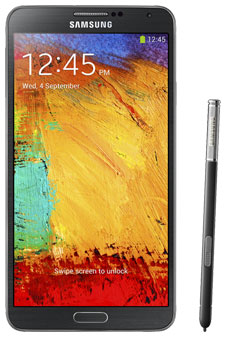Samsung Galaxy Note 4: Can it get better than the Galaxy Note 3 phablet?

The Samsung Galaxy Note 4 is among the highly anticipated Android devices to launch in 2014, following the recent launch the HTC One M8, the Samsung Galaxy S5, and the upcoming LG G3.
This week, LG sent out invites to an event on May 27 which will be held simultaneously in San Francisco, New York and London. Many believe that the Korean company will be launching the next-generation LG G3, after the surprise success of its predecessor. Although the LG G2 was only launched late 2013, it is believed that LG would be launching it earlier - as early as this month - to grab hold of the competitive mobile phone market.
Meanwhile, rumors of the Galaxy Note 4 have been rife, with fans curious as to what new features and upgrade Samsung will come up with for its new phablet.
Some rumors state that the screen-size will be increased to a 5.9 inch or even a 6 inch, slightly larger than the Galaxy Note 3's 5.7 inch display.
The phablet is set to have a 3560x1550 QHD display, a powerful octa core 64-but Qualcomm Snapdragon 810 processor, 4GB RAM, 128 GB storage, 21 megapixel camera with LED flash and a whopping 3800mAh battery.
The Galaxy Note 3, which launched in September 2013, is one of the best smartphones around, and Samsung is in no rush to launch the next-generation flagship phablet.
The Note 4 is likely to release in September 2014, at the Berlin IFA trade show. Samsung's senior vice president Yoon Han-Kil told Reuters that Samsung is planning to launch a new version of the Galaxy Note with a "new form factor" in the second half of this year.
"Our ultimate goal is to make products that consumers really aspire to have. This is how we are trying to find a breakthrough in the stagnant premium market," said Yoon.
The Korean company is also working on launching two smartphones running its very own Tizen operating system. Samsung's first Tizen phone is set to launch towards the end of the second quarter, with one being a high-end model, and the second being mid-range.











